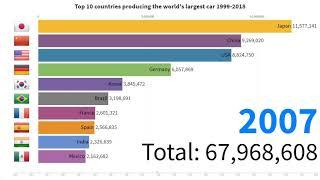Top 10 Best US Minimum Wage by State from 1999 to 2018
Description
A cleaned Visualization of US state and federal minimum wages from 1999 to 2018 . The data was scraped from the United States Department of Labor's table of minimum wage by state.
As laws differ a lot from territory to territory, especially relating to whom is protected by minimum wage laws, the following footnotes are located throughout the data in Footnote to add more context to the minimum wage. The original footnotes can be found here.
(a) - For the years indicated, the laws in Arizona, Arkansas, California, Colorado, Kentucky, Minnesota, Ohio, Utah, and Wisconsin applied only to women and minors.
(b) - Rates applicable to employers of four or more.
(c) - Rates applicable to employers of six or more. In West Virginia, applicable to employers of six or more in one location.
(d) - Rates applicable to employers of two or more.
(e) - For the years 1988 to 1990, Minnesota had a two tier schedule with the higher rate applicable to employers covered by the FLSA and the lower rate to employers not covered by the FLSA.
(f) - Minnesota sets a lower rate for enterprises with annual receipts of less than $500,000 ($4.90, January 1, 1998-January 1, 2005). The dollar amount prior to September 1, 1997 was $362,500 ($4.00 - January 1, 1991-January 1, 1997); Montana sets a lower rate for businesses with gross annual sales of $110,000 or less ($4.00 - January 1, 1992-January 1, 2005); Ohio sets a lower rate for employers with gross annual sales from $150,000 to $500,000 ($3.35 - January 1, 1991-January 1, 2005) and for employers with gross annual sales under $150,000 ($2.50 - January 1, 1991-January 1, 2005); Oklahoma sets a lower rate for employers of fewer than 10 full-time employees at any one location and for those with annual gross sales of less than $100,000 ($2.00, January 1, 1991-January 1, 2005); and the U.S. Virgin Islands sets a lower rate for businesses with gross annual receipts of less than $150,000 ($4.30, January 1, 1991-January 1, 2005).
(g) - In the District of Columbia, wage orders were replaced by a statutory minimum wage on October 1, 1993. A $5.45 minimum rate remained in effect for the laundry and dry cleaning industry as the result of the grandfather clause.
(h) - In Puerto Rico, separate minimum rates are in effect for almost 350 non-farm occupations by industry Mandatory Decrees. Rates are higher than those in the range listed in effect in a few specific occupations. (i2) - The rate is 5.08/hour for those employees not covered by the Fair Labor Standards Act.
(i) - In the U.S. Virgin Islands, implementation of an indexed rate, which was to have started January 1, 1991, was delayed.
Music:
1. Icy Vindur - A Himitsu.
2. Oyasumi - Smith The Mister .
I am a student who loves programming and specifically visualizing data.
Please support my channel. . It can buy me another cup of coffee :)





















Comments